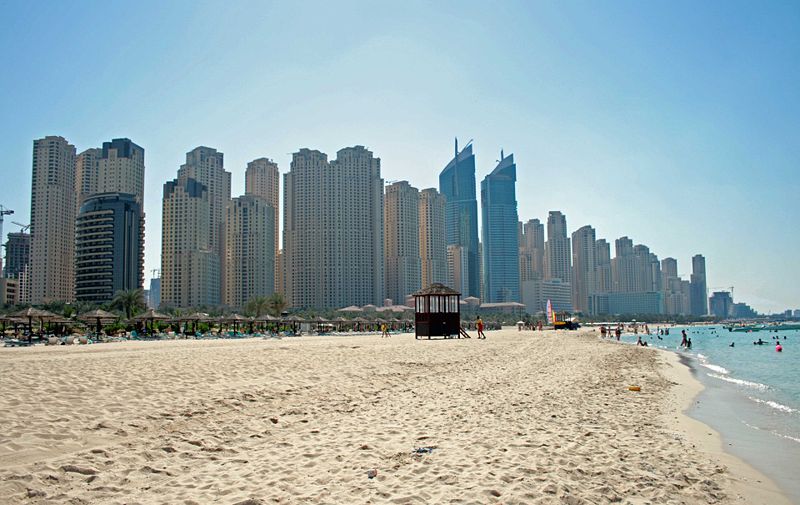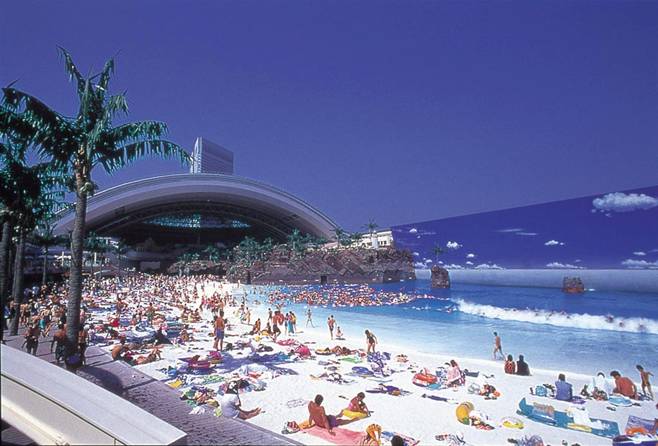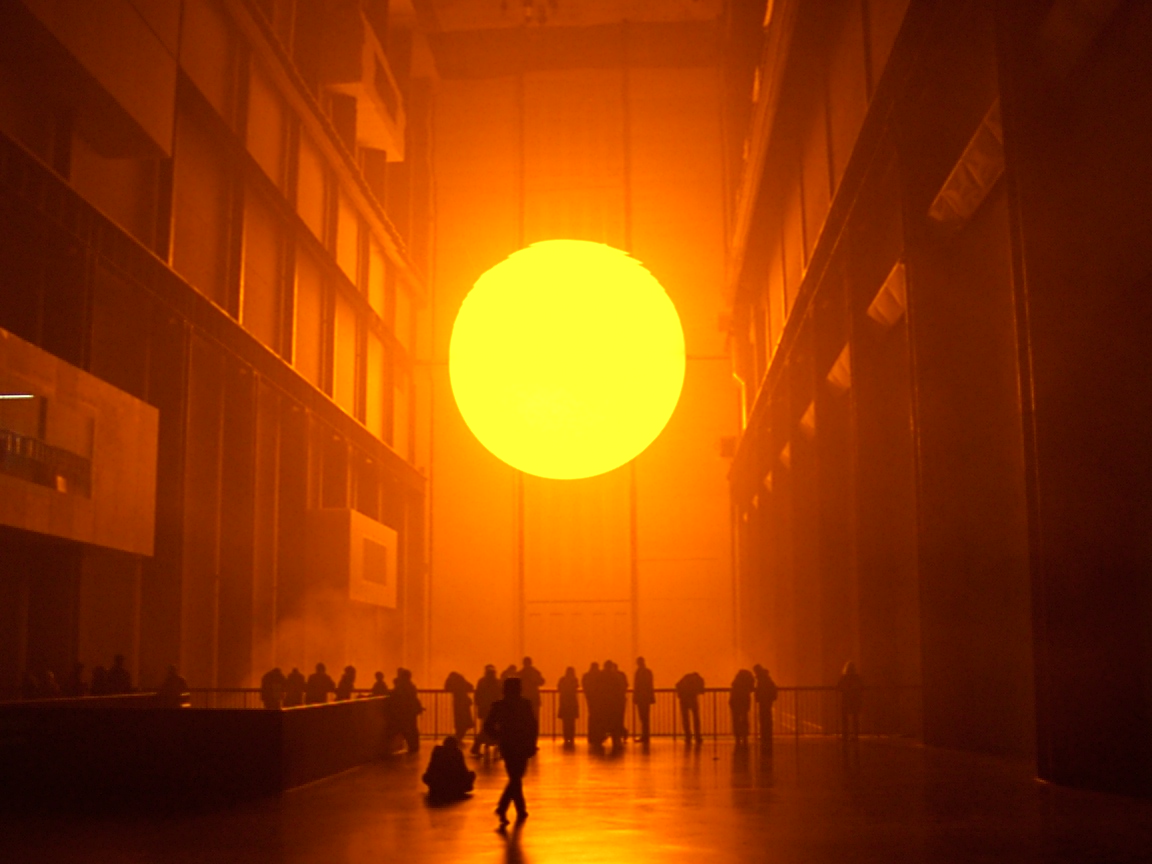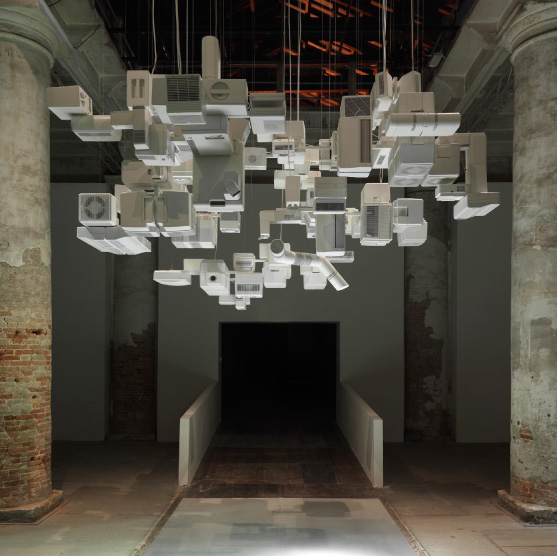
[Jumeriah Beach, Dubai. via: wiki commons]
You have no doubt heard that even the luxury goods industry is smarting from the economic woes that surfaced prominently in 2008. And the development equivalent of this, the luxury urbanism across the Middle East, has now also decided to shelve - a few projects. How odd in fact that a collaboration between a luxury goods brand (Versace) and a Middle East brand city (Dubai) would be offering press releases deep into December on such an ostentatious project as a climate-controlled beach.
The Palazzo Versace Beach proposal ambitiously seeks to single-handendly suck the heat out of its sand; to make the beach cool. Ah, but “how?”, you say? (Of course, “why?” is also valid.) One possible implementation is to employ a radiant-slab-like foundation to the sand. Though certainly avid and vigorous sandcastle builders would encounter a snag when they dig their moats. Another possibility is to maintain nearby giant cool-air blowers. But I thought all these Versaciates left their respective domiciles to get away from it all, not smack on to a runway airstrip?
It is difficult to restrain the desire to modify our environment. Making the cold … warm, and the hot … cool. Isnt this the very foundation of architecture even prior to HVAC, a controllable micro-climate? Open a window, and ta-da, a cool breeze. Close a window, and ah, toasty.
Today, often architecture is more circumstantial to large-scale environment modulating systems.

[Seagaia Ocean Dome opened in Japan in 1993, with visitor numbers peaking at 1.25m in 1995.]
The Ocean Dome, the world’s largest environmentally controlled.. uh … environment maintained an air temperature held around 30 degrees celsius and the water at around 28. Life was certainly a beach at least until it closed in 2007.

[Olafur Eliasson, The weather project (2003) in Turbine Hall at the Tate Modern, London.]
Olafur Eliasson’s “Weather Project” employed a fine mist to complete the sunset haze environment of the hundreds of mono-frequency lamps. The mist would accumulate into faint, cloudy formations,varying with eacn visit.

[An Te Liu, Cloud (2008) for the Venice Biennale. ©cameraphoto arte.]
An Te Liu’s “Cloud” is a battalion of reassembled ionizers, dehumidifiers, and air purifiers running continuously, even exhuastively, in search of 100% pure air.
In Cloud, the appliances are merged, creating mutant assemblies and further confusing the scale at which the work is to be read. It is configurable, expandable and networked, and as a one-to-one reading it is intrusive – even excessive – and highlights the fear of unmediated interior environments. As a larger-scale work it is less Modernist urbanism than Futurist space-junk, since most of the material is intercepted by Liu, no doubt through online bartering portals, en route to dumps as the global e-waste burden grows. At its largest scale it is read as a machined equivalent of an actual cloud abstracted into its components of moisture processing, air exchanges and atmospheric densities, and imagines the potential, as in snow-blowing machines, of generating entire weather conditions at will.
(From a forthcoming essay in Architectural Design guest edited by Sean Lally.)
-----
Via InfraNet Lab
Personal comment:
A propos des projets climatiques, bons ou mauvais... On constate qu'il y a un intérêt lorsqu'il y a une création qui induit un cadre neuf, un détournement et une combinaison.
Si il ne s'agit que de luxe-confort (refroidir la plage à Dubai) ou de reproduction (Ocean Dome), alors l'intérêt est plus que limité et l'on se trouve dans une dépense énergétique totalement superflue (tout comme le service offert).




